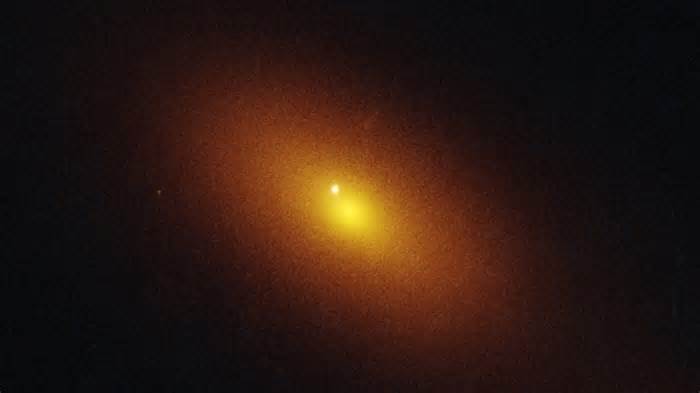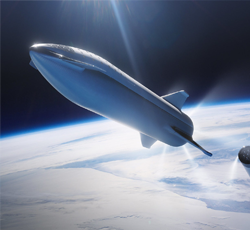
NASA finds supermassive black hole called ‘Space Jaws:’ Why it deserves sci-fi horror name
- by Cowboys Wire
- May 12, 2025
- 0 Comments
- 0 Likes Flag 0 Of 5

Black holes are often considered terrors of the known universe.
Supermassive black holes are regions of space where the pull of gravity is so intense that even light doesn't have enough energy to escape.
Tidal disruption events occur when a black hole consumes a hapless star, ripping it apart an swallowing it in a powerful burst of radiation.
The newly discovered supermassive black hole, which is about 1 million times the mass of our sun, is perplexing because it's not at the center of its host galaxy, as is expected.
A monstrous black hole in a distant galaxy has earned itself a nickname worthy of a science-fiction horror movie for its gluttonous feasting on any stars that dare get near.
Meet "Space Jaws."
NASA coined the moniker inspired by Steven Spielberg's famous 1975 film for the supermassive black hole after the agency's telescopes uncovered it lurking like a cosmic predator 600 million light-years from Earth.
Until now, the menacing entity has been "an invisible monster gulping down any wayward star that plummets toward it," NASA said in a blog post about the black hole.
But the covert black hole revealed itself to astronomers earlier in 2025 with a spectacular burst of radiation known as a tidal disruption event. The explosion was so large and so bright that several NASA instruments, including the famed Hubble Space Telescope, were able to detect the black hole in an unexpected part of its host galaxy.
The black hole responsible for the cosmic disruption, which is prowling inside an enormous galaxy, only betrays its presence every few tens of thousands of years, according to a team of researchers responsible for uncovering it.
Why? NASA's Hubble Space Telescope captures photos of 'Space Jaws'
The newly discovered supermassive black hole, which is about one million times the mass of our sun, perplexed the team of astronomers who found it for an odd reason: It doesn’t reside exactly in the center of its host galaxy, where supermassive black holes are typically found.
That detail about the black hole makes the associated tidal disruption event the first of about 100 recorded so far that have not taken place in a galaxy's center, according to the researchers.
"Space Jaws" even co-exists with another even larger supermassive black hole, weighing in at a gargantuan 100 million times the mass of our sun.
As expected, that black hole does exist at the galaxy's center – a relatively short 2,600 light-years away from its smaller cousin. For comparison, the distance between those two black holes is one-tenth the distance between Earth's sun and Sagittarius A*.
In fact, researchers suspect there is most likely a third supermassive black hole somewhere in that distant galaxy that conspired with the larger of the three to give "Space Jaws" – the smallest among them – the boot from the center.
The offset black hole gave itself away when several ground-based sky survey telescopes observed a flare as bright as a supernova, but hotter and with tell-tale chemical emissions. The researchers then used NASA’s Chandra X-ray Observatory and the Hubble Space Telescope to better pinpoint the location of the tidal disruption event.
NASA then released imagery Hubble captured Jan. 16, 2025, in both ultraviolet and visible light wavelengths. The research will be published in an upcoming issue of The Astrophysical Journal Letters.
What is a tidal disruption event?
Tidal disruption events occur when a black hole consumes a hapless star, ripping it apart and swallowing it in a powerful burst of radiation.
As the victim is “spaghettified” – or stretched out like a noodle – shocks and outflows with high temperatures become visible to telescopes in both ultraviolet and visible light.
What is the Hubble Space Telescope? How it's different from James Webb Space Telescope
The Hubble Space Telescope, which has been in a low-Earth orbit since 1990, recently marked its 35th anniversary of documenting the cosmos.
Built by Lockheed Martin in Sunnyvale, California, the telescope was launched on space shuttle Discovery from NASA's Kennedy Space Center near Cape Canaveral, Florida, to document the cosmos in a way that ground telescopes never could. Throughout its three decades of service, the observatory has transmitted endless streams of stunning cosmic images, confirmed the existence of "dark matter" and helped track a black hole moving through the Milky Way.
But the James Webb Space Telescope, which launched in 2021, far surpassed the abilities of Hubble. Orbiting the sun rather than Earth, the James Webb Space Telescope is outfitted with a gold-coated mirror and powerful infrared instruments.
Please first to comment
Related Post
Stay Connected
Tweets by elonmuskTo get the latest tweets please make sure you are logged in on X on this browser.
Sponsored
Popular Post
Sam Altman's OpenAI Takes On Elon Musk's Grok in AI Chess Tournament Final - Who Won?
28 ViewsAug 09 ,2025






 Energy
Energy


















